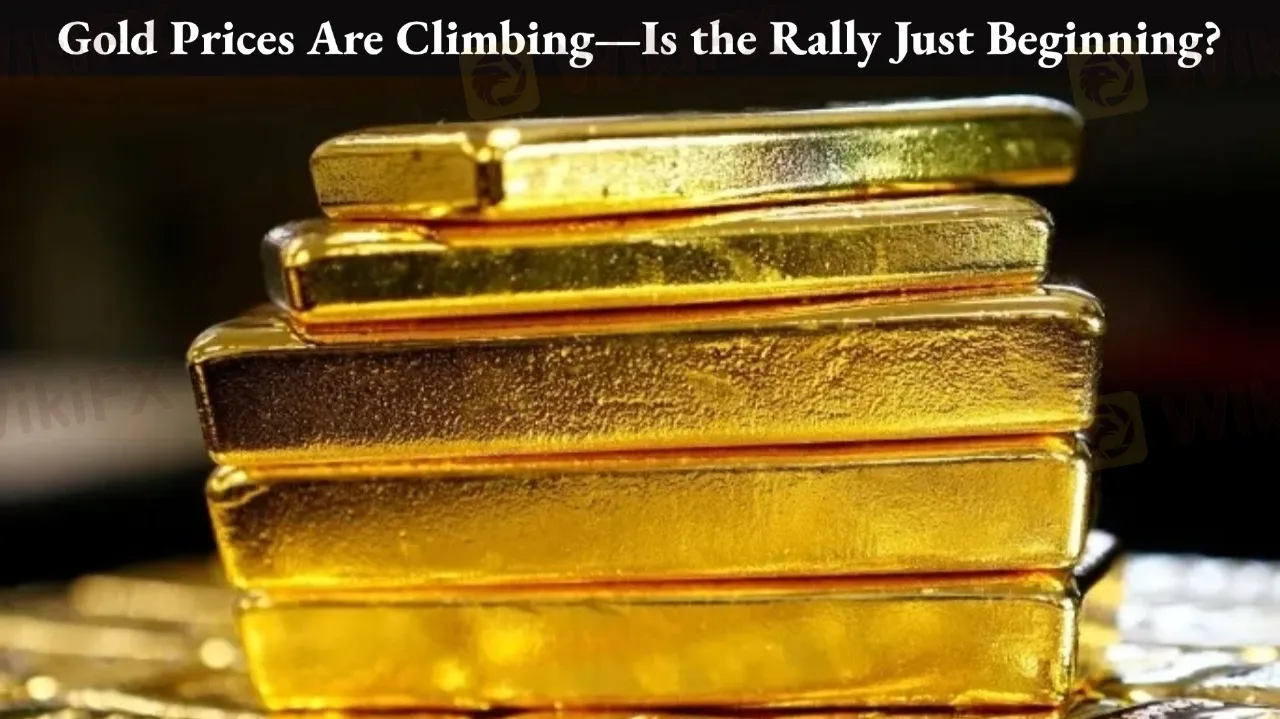Gold Prices Are Climbing—Is the Rally Just Beginning?
Abstract:Gold Prices Surge Nearly 5% This Week Amid Safe-Haven Demand and Weaker Dollar.

Gold prices posted a strong rally this week, hitting a six-week high as rising geopolitical tensions and a weakening U.S. dollar renewed investor interest in the precious metal.
Spot gold closed the week at $3,294.56 per ounce, gaining nearly 5% — the best weekly performance in six weeks. Gold futures also climbed sharply, ending at $3,365.80 per ounce, up more than 5%. The market remained relatively flat in early trading but broke out midweek and surged to a two-week high by Friday.
The rally wasnt limited to gold. Other precious metals also advanced. Platinum rose 1.2% on the week, touching its highest level since 2023, while silver gained 1.1%, reflecting a broader market shift toward safe-haven assets.
Whats Driving the Gold Rally?
Several factors contributed to the sudden surge in gold prices. Global trade tensions have resurfaced, raising uncertainty over the economic outlook. As a result, investors have turned to safe-haven assets, boosting demand for gold.
At the same time, the U.S. dollar weakened, with the dollar index falling 0.9% this week. A softer dollar reduces the opportunity cost of holding gold and increases its appeal to foreign buyers. Furthermore, disappointing U.S. consumer confidence and manufacturing data have heightened concerns over domestic demand and industrial activity. These developments have dampened expectations of monetary tightening, indirectly supporting the gold market.
Can Gold Keep Rising?
Despite this week‘s impressive gains, gold’s continued upward trajectory is not guaranteed. Technically, gold is approaching a resistance level near its previous highs. The $3,500-per-ounce mark may act as a key barrier in the near term.
Moreover, the recent rally has been driven largely by safe-haven sentiment and a bearish outlook on the dollar. Should geopolitical tensions ease or the dollar rebound, gold may face a pullback. Additionally, if upcoming U.S. economic data surprises to the upside, it could prompt markets to reassess the likelihood of rate hikes, potentially pressuring gold prices.
Investor Considerations and Risks
Golds safe-haven appeal is clear in the current environment, but investors must remain cautious of short-term volatility. Buying at elevated levels could expose traders to near-term corrections, especially after such a rapid rise.
A flexible approach is advisable. Market participants should closely monitor upcoming U.S. economic data, dollar trends, and shifts in Federal Reserve policy expectations. Its also important to stay alert to sudden changes in market sentiment and use stop-loss or take-profit strategies to manage risk and avoid emotional decisions.
Why Is Gold Favored During Turbulent Times?
Gold has long been considered a safe-haven asset, and its appeal becomes especially pronounced during times of economic uncertainty, geopolitical tension, or financial market volatility. Unlike fiat currencies or equities, gold is not tied to any single government or corporation, making it less vulnerable to policy changes, bankruptcies, or geopolitical shifts. This independence gives it a perceived stability that investors turn to when other assets become too risky.
Moreover, gold holds intrinsic value. Its globally recognized, easily tradable, and limited in supply, which helps it retain purchasing power over time — especially in inflationary environments. Historically, during periods of high inflation or currency devaluation, gold has helped preserve wealth. In this sense, it is often viewed not just as an asset, but as a form of insurance against systemic risks.
Another key reason is diversification. Gold typically exhibits a low or even negative correlation with risk assets like stocks. This means it often moves in the opposite direction during market downturns, making it a valuable tool for balancing a portfolio. During turbulent times, golds role in reducing overall portfolio volatility becomes more evident.
In summary, golds historical resilience, independence from centralized systems, and role as a store of value and hedge against inflation make it a trusted choice when fear dominates the market.
Outlook
The recent strong rally in gold has rekindled optimism among investors, but whether this momentum can be sustained depends on several evolving factors. While current support from geopolitical tensions, a weaker dollar, and soft U.S. economic data is evident, these drivers are dynamic and can shift rapidly.
One important area to watch is the trajectory of U.S. economic indicators. If upcoming data — such as employment, inflation, or retail sales — shows signs of resilience, it may prompt the Federal Reserve to reconsider its current dovish tone. Any renewed talk of rate hikes or delayed rate cuts could dampen golds appeal by lifting bond yields and strengthening the dollar.
On the technical side, gold is approaching key resistance levels. The $3,500/oz psychological barrier is seen as a critical test for further upside. A clean breakout above this level could trigger another wave of momentum buying, while failure to break through might lead to a healthy consolidation or even a short-term correction.
Another wildcard lies in global geopolitical developments. Escalating conflicts or rising tensions in key regions could quickly shift market sentiment back in favor of safe-haven assets like gold. Conversely, any signs of de-escalation may curb demand for hedging instruments.
In the short to medium term, gold remains in a favorable position, supported by cautious central bank policies, ongoing macro uncertainty, and continued interest from institutional investors. However, volatility should not be underestimated. Investors are advised to monitor developments closely and adopt flexible strategies that factor in both upside opportunities and potential corrections.

Read more

Inside the Market: Who’s Buying, Who’s Selling, and Why It Matters
Understanding who takes part in the financial markets is key to knowing how and why prices move. Knowing who these people or organisations are can help investors feel more confident and better understand the effects of global news on market movements.

Southeast Asia’s Trade Outlook in the Face of U.S. Tariff Adjustments
As the U.S. adjusts its tariff policies, Southeast Asian nations are facing a critical moment in trade negotiations, with the region’s economy potentially on the brink of new opportunities.

IronFX Launches Online Trading Education to Boost Trader Education
IronFX launches a trading education blog offering in-depth market analysis, expert insights, and practical strategies for traders at all levels.

FBS Analysts Forecast 2025: Opportunities Amidst Market Volatility
As 2025 approaches, the global cryptocurrency market enters a phase filled with uncertainties and challenges.
WikiFX Broker
Latest News
Is it Safe to invest in Xtreme Markets in Malaysia?
Inside the Market: Who’s Buying, Who’s Selling, and Why It Matters
IronFX Review 2025: Trusted Broker for Forex & Commodities Trading
Gold Prices Are Climbing—Is the Rally Just Beginning?
Rate Calc
